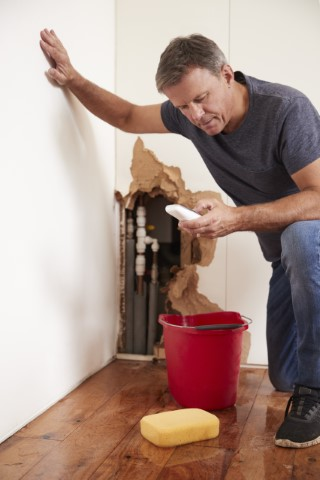Most homeowners know how to react when disaster strikes—a burst pipe, flooded basement, or roof leak after a storm. But what about the small, slow leaks that often go unnoticed? A dripping faucet, a pinhole leak in a wall, or a small patch of ceiling discoloration might not seem urgent at first. Unfortunately, these minor issues often cause major problems over time. Understanding the impact of small water leaks can help you take action early and prevent more serious damage down the line.
Small Leaks Don’t Stay Small
One of the biggest misconceptions about small leaks is that they’re harmless. In reality, even a slow drip can release gallons of water over days or weeks. That moisture doesn’t just disappear—it seeps into drywall, insulation, flooring, and cabinetry. Over time, that hidden water leads to swelling, warping, and decay. By the time visible signs appear, the damage is already extensive and expensive to repair.
The problem is that water follows the path of least resistance. So a small leak in one area can travel through a home’s framing or subflooring before showing visible signs elsewhere. That’s why early detection is crucial. What seems like a small ceiling stain could be the result of long-term moisture pooling above it.
Mold Growth Begins Quickly
Moisture creates the perfect environment for mold. In fact, mold can begin growing in as little as 24 to 48 hours after a leak starts. When that leak is slow and hidden, mold has even more time to spread undetected. That’s why small, unchecked water leaks are one of the leading causes of indoor mold growth.
Mold doesn’t just damage your home—it also poses serious health risks. It can trigger allergies, respiratory issues, and sinus problems, especially in children, seniors, or anyone with a weakened immune system. In many cases, by the time you see or smell mold, it’s already taken hold behind walls or under flooring.


Structural Damage Happens Silently
Water may be clear and clean at first, but its long-term impact on your home’s structure can be devastating. Prolonged exposure to moisture causes wood to rot, drywall to crumble, and insulation to lose its effectiveness. It can also weaken the fasteners and framing that support your home’s infrastructure. This means that what began as a slow leak could eventually compromise your floors, walls, or even the roofline if ignored.
Even your electrical system is at risk. Water leaks near wiring or outlets can cause short circuits or fire hazards. That’s why it’s essential to address leaks—no matter how small—as soon as they’re discovered.
Early Detection Saves Money and Stress
Small water issues often go undetected because they don’t always cause immediate inconvenience. You might not hear a drip or feel dampness until the damage is done. That’s why routine inspections and prompt attention to even minor changes are so important. Watch for subtle signs like increased humidity, unexplained stains, bubbling paint, or a musty odor.
The cost of repairing water damage escalates dramatically the longer it’s left untreated. Catching a leak early could mean a simple pipe repair and some patchwork. Ignoring it could lead to a full mold remediation project or structural rebuild. The earlier you respond, the more you save—in both money and stress.
ARC Handles the Damage You Don’t See Coming
What you can’t see can absolutely hurt your home. The impact of small water leaks is often underestimated, but left unchecked, even the smallest drip can lead to serious structural and health concerns. At ARC, we specialize in identifying, repairing, and restoring damage caused by water intrusion—no matter how small or hidden it may seem. Our team provides comprehensive water damage cleanup, mold remediation, and structural drying to protect your home from further harm. If you’ve noticed signs of a leak or suspect hidden damage, contact us today for a professional inspection.


